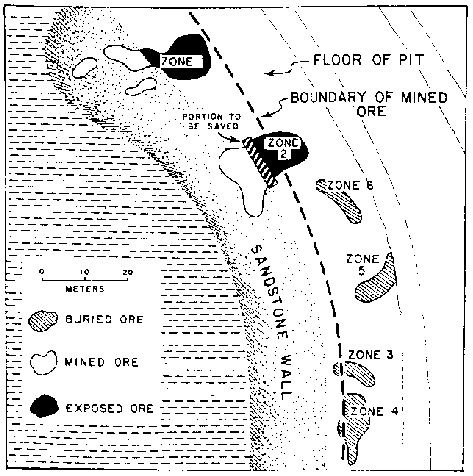 |
Science Frontiers ONLINE No. 121: Jan-Feb 1999 |
|
|
Oklo: An Unappreciated Cosmic Phenomenon
In 1972, French scientists discovered that several natural concentrations of uranium ore had become critical and flared up some 2 billion years ago at Oklo, Gabon. The concentration and configuration of the natural uranium and surrounding materials at that time had been just right to sustain fission. In fact, the analysis of the nuclear waste in the burned rocks demonstrated that plutonium had also been created. This implies that natural breeder reactors are also possible, raising the possibility of hitherto unappreciated, long-lived heat sources deep in the earth, in the other planets, and inside some of the stars.
Don't worry that the Oklo phenomenon might occur today on the earth's surface. The concentration of fissionable U-235 has fallen considerably in the last 2 billion years due to its radioactive decay. But, deep inside the earth and other astronomical bodies, nuclear criticality might still be possible due to different pressures, densities, etc.
In a stimulating and generally overlooked paper in Eos, J.M. Herndon proffers four important natural phenomena that may involve natural fission reactors.
- Geomagnetic reversals. In the deep earth, where pressures and densities are high, natural nuclear reactors may generate intermittent bursts of heat -- just as they did at Oklo -- and thereby cause the earth's dynamo to falter and reverse.
- Planetary heating. Jupiter, Saturn, and Neptune emit much more energy than they receive from the sun. Natural nuclear reactors could be the reason.
- Stellar thermonuclear ignition. Astronomers assume that the high temperatures required to ignite the thermonuclear reactions powering stars come from gravitational collapse, but this source does not seem adequate to some scientists. Nuclear fission reactors could ignite stars just as they do H-bombs.
- Missing matter. Natural nuclear reactors are finicky. There may be many star-sized, non-luminous objects out there that were never ignited and that we cannot see through our telescopes.
(Herndon, J. Marvin; "Examining the Overlooked Implications of Natural Nuclear Reactors," Eos, 79:451, 1998.)
Comments. Two additions to Herndon's list.
- Evolution of terrestrial life. Nuclear reactors produce copious mutagenic radiation. They could have accelerated the evolution of life, especially during the Cambrian Explosion. (See SF#32)
- Thermal plumes. Deep-seated natural nuclear reactors may create the thermal plumes said to be responsible for such surface hot spots as Iceland and Hawaii.
 | Disposition of six of the Oklo 2-billion-year-old natural nuclear reactors. (From: Anomalies in Geology). |